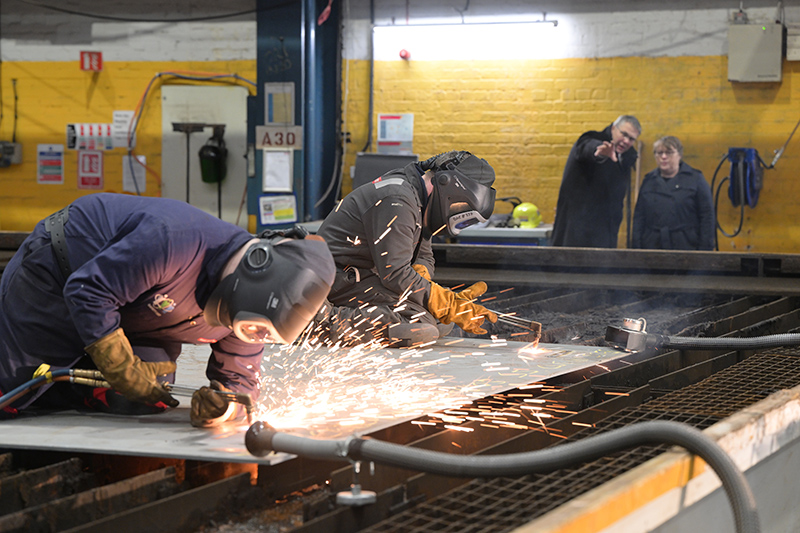
THE first steel has been cut in Glasgow to mark the start of the construction of the UK’s newest warship – HMS Sheffield.
Apprentice fabricator burner, Michael Miller, carried out the ceremonial act which has been heralded as a ‘significant’ milestone for British shipbuilding as it marks the start of the construction of the fifth of eight city class vessels.
All eight Type 26 frigates will be built on Glasgow’s Clyde, with the work sustaining nearly 2,000 jobs in Scotland and 4,000 jobs across the wider UK maritime supply chain for decades to come.
Simon Lister, MD of BAE Systems’ naval ships business, said, “This is a proud moment for our talented teams across the UK who play their part in the design and construction of these important vessels. HMS Sheffield’s construction will benefit from a range of investments, which are transforming our digital and physical infrastructure and will consolidate a centre of excellence for UK shipbuilding in Glasgow.
“I’d like to thank our customers and suppliers for their support and commitment as we take this programme forward together and deliver next generation frigates for the Royal Navy.”
The Type 26 is described as one of the world’s most advanced warships. It is designed for anti-submarine warfare and high-intensity air defence and can adapt its role quickly to transport high volumes of humanitarian aid and house medical facilities.
BAE Systems has invested approximately £12 million in a new Applied Shipbuilding Academy in Glasgow to support the development of the entire workforce, from apprentices through to senior leaders.
In addition, construction is at an advanced stage on the Janet Harvey Hall, a modern shipbuilding facility. Named in honour of the World War II shipyard electrician, the hall will greatly enhance productivity on the Clyde to support the delivery of these eight ships and future orders.








